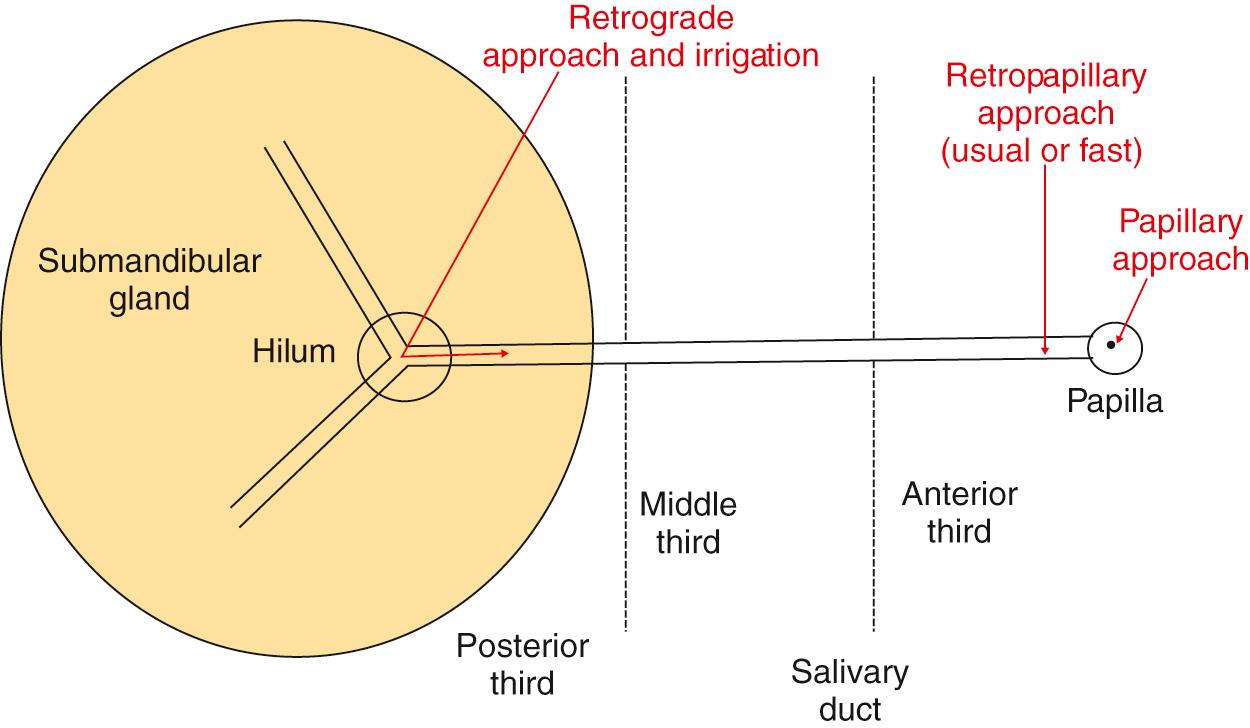Physical Address
304 North Cardinal St.
Dorchester Center, MA 02124
Papilla crossing is one of the key points for sialendoscopy, especially in submandibular sialendoscopy. After the papilla has been crossed, the sialendoscopy can begin. Instead of papilla crossing, other approaches to the salivary duct may also be needed. For example, the retropapillary approach can replace the papillary crossing when this crossing is not feasible. However, when the lithiasis removal procedure is over, the surgeon must check for the absence of remaining lithiasis in combined approaches procedures; in such cases, a retrograde approach to the duct is helpful ( Fig. 15.1 ).

Usual papillary crossing is performed with probes of increasing diameter, as described by Marchal et al. In 20% of cases, usual papillary crossing does not work, giving place to another papilla crossing technique – the guided puncture technique.
The progressive papilla dilatation is performed with lacrimal or salivary probes of diameters from 0000 to 6. The main difficulty is that after each salivary duct probe change, the surgeon goes out of the papilla and can lose the papilla entrance. At each step of the dilatation, it becomes more and more difficult to find and enter the papilla again.
Become a Clinical Tree membership for Full access and enjoy Unlimited articles
If you are a member. Log in here